Last updated: September 15, 2021
Article
Wildlife of Lake Clark
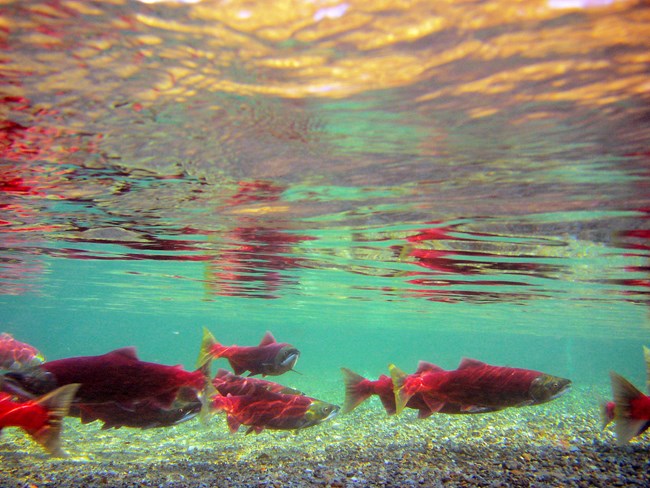
NPS Photo/D. Young
Sockeye Salmon
Sockeye, sometimes called red salmon are a keystone species in the park’s ecosystems. They provide nutrients to life at all levels of the food chain. Sockeye salmon are anadromous fish. Anadromous means they hatch in freshwater but migrate to the ocean during their first or second summer. After spending one to three years growing in the ocean, they return to their birthplace to lay their eggs, and soon afterward, die. Salmon are one of the only species that bring nutrients from the ocean to the rivers, lakes, and forests. Salmon have sustained people living in the area for centuries and are a primary food source for local people. Sockeye are also an important food source worldwide and provide commercial fishing jobs for many people in Southwest Alaska.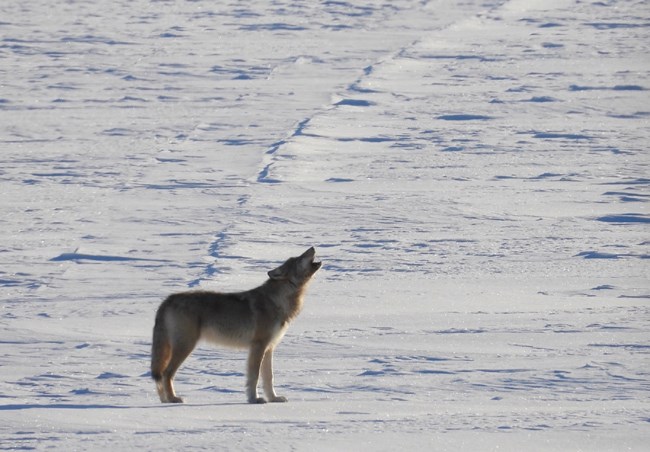
NPS/J. Mills
Gray Wolves
Wolves live as a family in what is called a pack. Biologists have identified four to six packs of grey wolves in the park and preserve with about four to ten members each. Compared to other Alaskan wolf packs, the park’s wolves have larger territory sizes, mean there are fewer wolf packs in the same area. These packs’ territories average 1000 square miles. Territory size depends on what the wolves hunt. Some of the wolf packs eat salmon. The wolf packs that eat salmon do not have to roam as far for food. Even in spring when lake ice melts, wolves can dig salmon carcasses out from the ice. This makes salmon a long term food source. For this reason, salmon-eating wolf packs in the park have a smaller territory size than packs that do not eat salmon.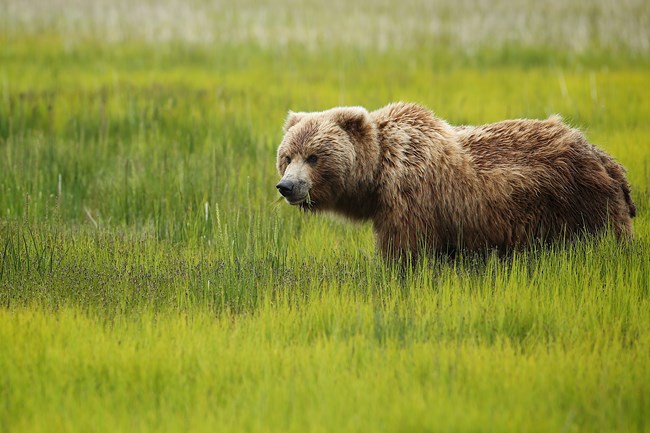
NPS/J. Pfeiffenberger
Brown Bears
Lake Clark has lots of bears! Their behavior and diet vary based on whether they live in the park’s inland habitats, such as boreal forests and tundra, or on the park’s coastline where food is plentiful. For bears, the coast is like city where there are grocery stores and many resources are in a small space. On the coast, plants high in protein grow in salt marshes, tidal flats are filled with clams, berries grow on nearby hillsides, and salmon run in rivers in late summer. The inland habitats, or areas away from the coast, have less food resources that are spread out over a larger area. Inland bears eat more roots, insects, and berries. They also travel further to find the salmon in the streams and lakes. Since there are fewer sources of protein-rich food in the interior, there are also fewer bears inland.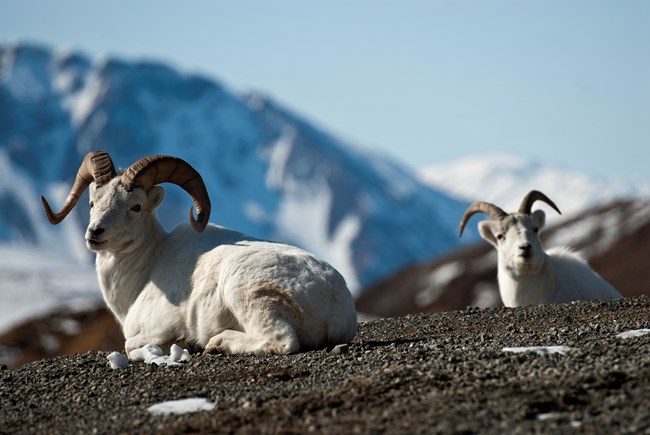
NPS Photo/K. Thoresen
Dall Sheep
Wild sheep thrive in the mountains. They ramble along rocky ridges, eat tiny alpine plants, and sleep on steep slopes. These sheep live further north than any other North American wild sheep. Lake Clark is the furthest southwest reach of their range in Alaska. Dall sheep eat a wide variety of plants during the summer when food is abundant. Winter diets are more limited and can include dry, frozen grasses, sedges, lichens, and moss. Though there are many mountains in the park, Dall sheep live on only a few of them. If a mountain peak is too high, vegetation may be too scarce. If they range too close to the coast long winters can bury food beneath deep snow. Lake Clark’s sheep population is about 1,000 animals. Look for them on the steep slopes of Tanalian Mountain or migrating around Twin Lakes to find salt licks!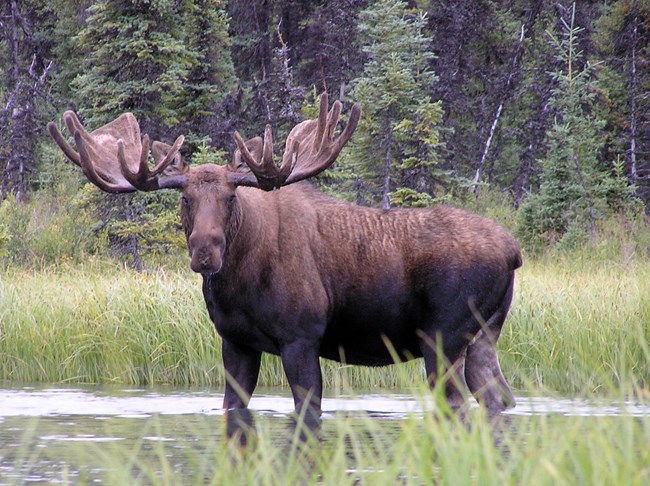
NPS Photo/J. Mills
Moose
Moose live and forage in forests, tundra and wetland areas of Lake Clark. Moose are herbivores (plant-eaters) and their diet changes with each season. In the spring and summer, they eat sedges, horsetail, grasses and aquatic vegetation. During the fall and winter they will travel large distances in search of willow, birch, aspen twigs, and other shrubs. Moose are active in the day, especially at dawn and dusk. Moose have very long legs that allow them to wade into lakes and rivers and through deep snow. While they have poor eyesight, they have good hearing and an excellent sense of smell. Moose are large and can be very aggressive, even reaching speeds up to 35 miles per hour!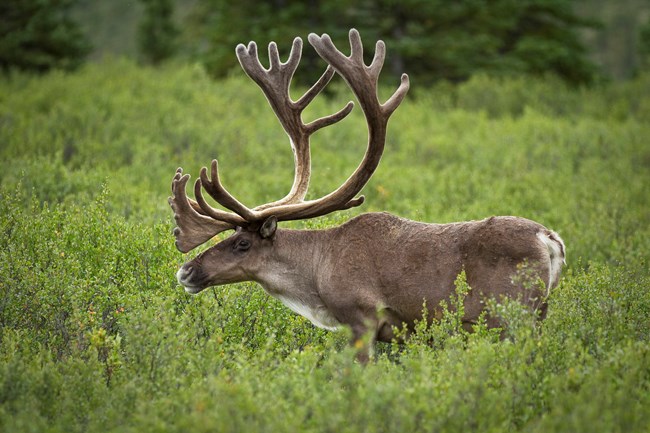
NPS/J. Frank
